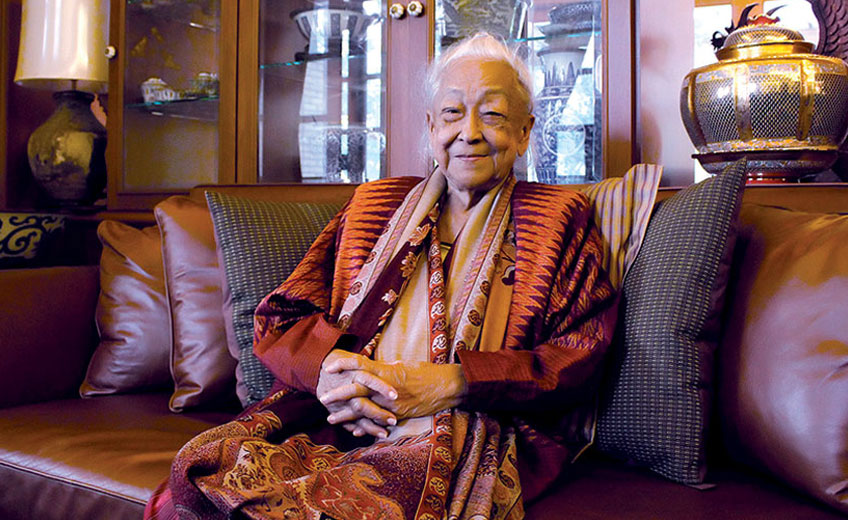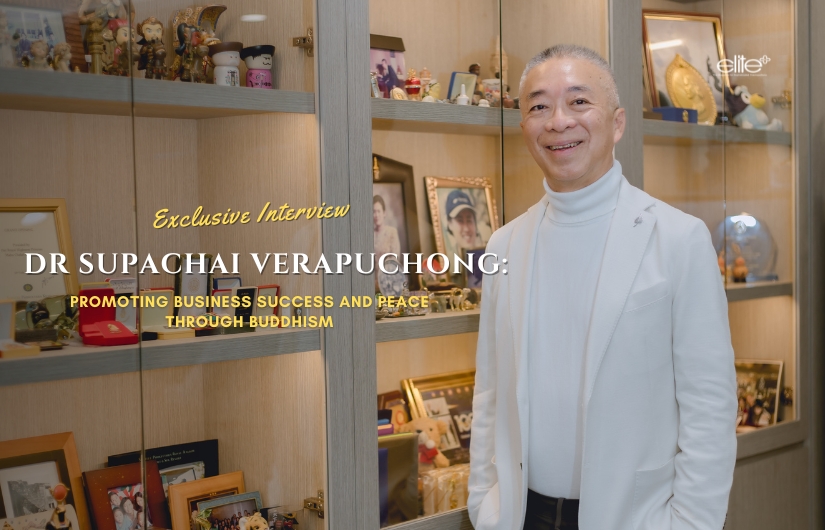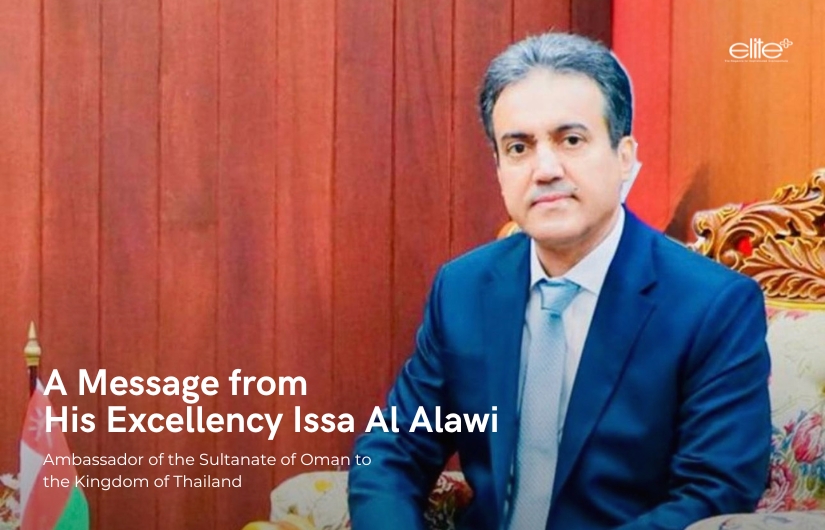Mom Dusdi ParibatranaAyudhya has spent most of her life encouraging and nurturing early childhood and primary school education. The Phuketborn pedagogue, now in her nineties, earned a BA from Chulalongkorn University and an MA in child development, as well as a diploma in childcare from Mills College in California. Mom Dusdi was one of the first to introduce rhyming techniques for teaching Thai to kindergarteners, and launched the country’s first picture books to foster young imaginations and help children connect visual images with linguistic properties. Mom Dusdi speaks to Elite+ about the importance of early childhood education and some of the continuing problems with the Thai education system.
- What is your view on the overall state of education?
The problem we have is that the foundation has been neglected. Earlychildhood education, up until the age of seven, provides a crucial foundation.It’s no good to build something and pay no attention to its foundation. You canlook up reports from the likes of UNICEF and the UN; it receives no mention.Children’s rights, hygiene and safety are covered. But there’s no mention of thegroundwork of education from early childhood.There is little awareness of the fact that children can learn even withoutcomplete comprehension. The importance of learning at the subconsciouslevel has only recently garnered interest and become trendy, although I’vealready been at it for 30 years. They still haven’t got around to making thatconnection to the foundation and explaining how brains can be optimized. Theyknow how a child’s brain grows physically but are at a loss as to how to explain it. You need to look at the foundation to improve the quality of the population. No one talks about early childhood development, which is sad.
- Does this also apply to the educationsystem in Thailand?
What we’re doing in Thailand is first forcing children into conversation, which is the opposite of how it should be. The principle is to start with comprehension. It is the natural way children learn. They start learning vocabulary even before they are born. By the time a child utters the first word – in any language – at the age of two, he or she may have already learned a thousand words. It’s an example of what children are capable of. But this can’t be researched because there is no feedback. How do you know exactly how many words a child has learned up to that point? After all, little children can’t speak. My experience with my own children and grandchildren confirmed that children learn automatically.
- You were part of the team thatrevolutionized Thai education.
I was involved in the revision of the primary school curriculum in 1985. I was the only adviser working in kindergarten-level education. I ended up working on that every day for six years, so now I know how they work. My focus was on arts, dramatic arts, physical education and morals.
Teaching ethics was already on the way out at the time. There was a committee consisting of 30 teachers from all over the country. I made the point that we had to admit our failure in teaching morality because we were only preaching. We were using exclusively
Buddhist vocabulary. Muslim children would run away. And any child would find that hard to understand to begin with. So I asked the committee to think of moral principles that were universal. We came up with 35 of them and had fun in the process. After that, I went abroad for a while. As soon as I came back, an official approached me and said worriedly, “Ma’am, there’s a communist in your Ministry of Education team.” “Why?” I asked. He replied, “The new curriculum makes no mention of Buddhism.” I just laughed and told him, “The culprit is here!”
Even a few days ago, someone on TV mentioned communist infiltration that happened in religion that same year! That was a misunderstanding. In fact, I was the first person who brought mindfulness to schools and made children practise it. Now it’s fashionable in the West. Western practitioners have applied the concept into something behavioural, which is great. I started introducing children to mindfulness by giving them signals, once in the morning and once in the afternoon, that meant they had to be still wherever they were – in the bathroom, at the lunch table, anywhere. This is the foundation that can be taught from a young age.
- Teachers are key players in theeducation system. What is your viewon teacher training?
Teachers have to know how toteach. It’s not telling children to repeatafter you and then write it down. Youcan put letters on cards, put them inmusic or write them on your forehead.Do you know where the best place tosense writing is? It’s on your back.Children can feel a character drawn ontheir back and match it with the oneon the board.
It takes time to teach, not tomention a lot of gimmicks. But thepayoff is that children will pick upthe ability to read and understandsentences, and also start guessing bythemselves. If there are 10 words, ofwhich a child only knows three, he orshe can guess the rest from the way theteacher tells a story, or from the toneof voice.
We haven’t capitalizedon how humans guess. So we haveproblems with pedagogy and withliteracy.
Later on, I stopped teaching Changing a child’s behaviour begins with changing the teacher’s behaviour. At that time, our specialist teaching institutions were in the process of rebranding into the Rajabhat universities. Pedagogy was in serious danger due to neglect. All of a sudden hotel management became an important subject. The situation got better but I think it’s getting worse again.
Back in the day, the better students became teachers. A teacher’s job was as busy as a doctor’s. It’s very demanding. We have seen an increasing awareness of the idea that whatever your specialization is, you have to learn teaching strategies if you want to impart that knowledge to someone else. The worst teachers are found in universities. They only talk to the blackboard. They don’t know how to teach, since they don’t even know how to talk and lack strategy. In the US, science professors have to undergo training because teaching without knowing how to teach is a waste of time.
When I was being trained, the most important thing from day one was to spend time with children. The key idea is that teaching is learning. Teaching children teaches us a great deal. We spent time with children from morning until afternoon, and then discussed their behaviour. We applied the theory to practice instead of starting from theory. For us, the children themselves are a massive body of knowledge.




















































































































































































































































































































































































































































































































































































































































































































































































































































































































